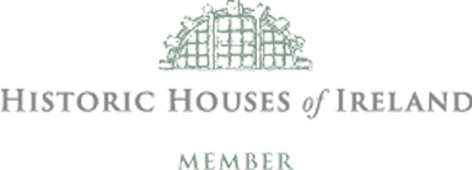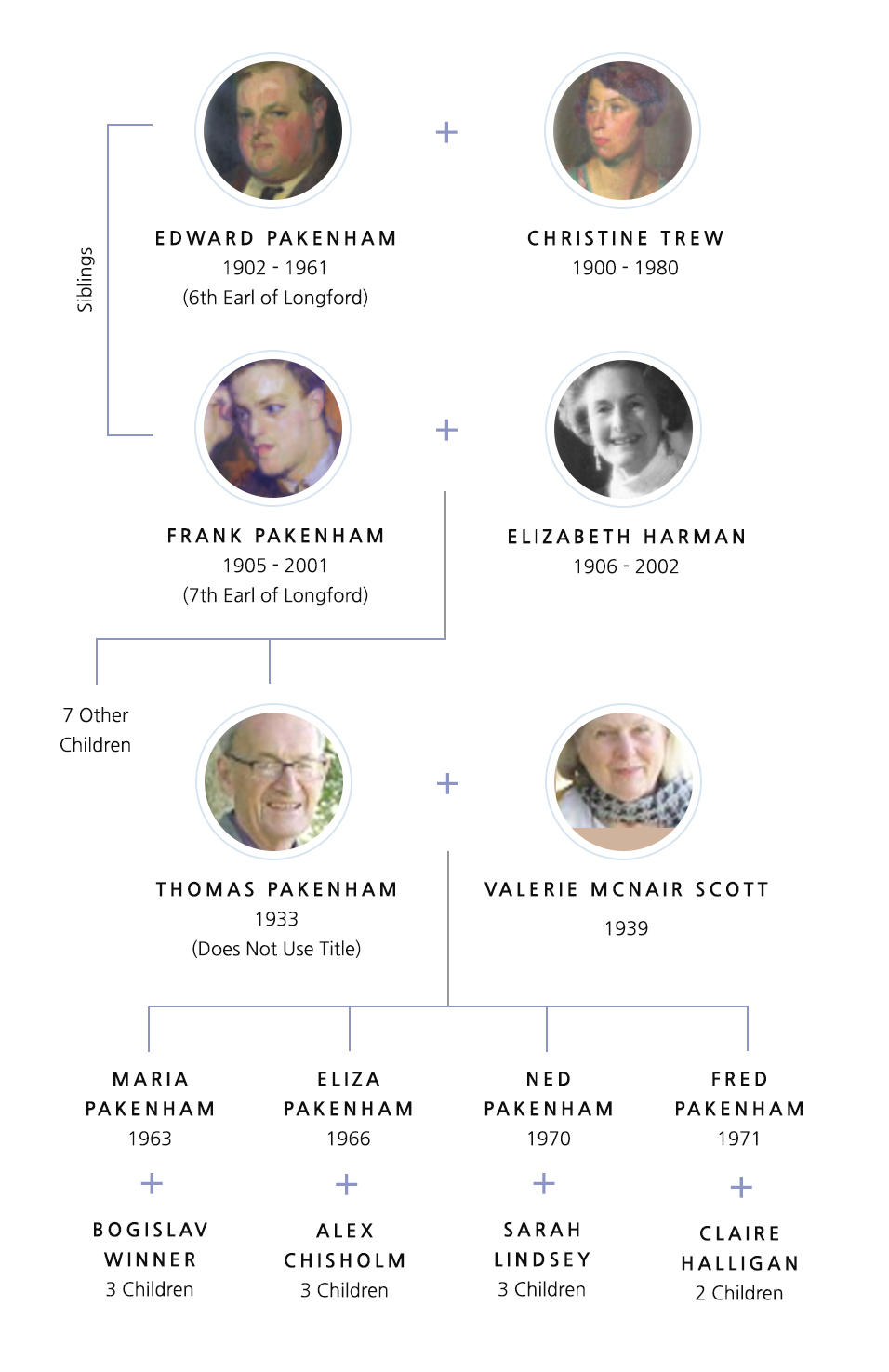The Pakenhams, later Earls of Longford, have lived at Tullynally for over 370 years. Through turbulent and peaceful times, it has been a family home.
ABOUT THE CASTLE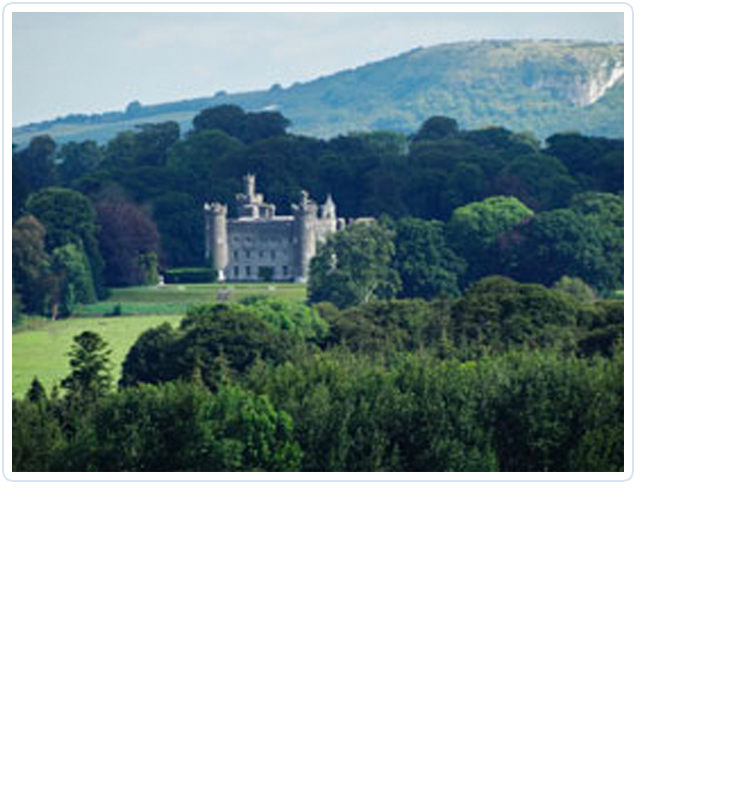
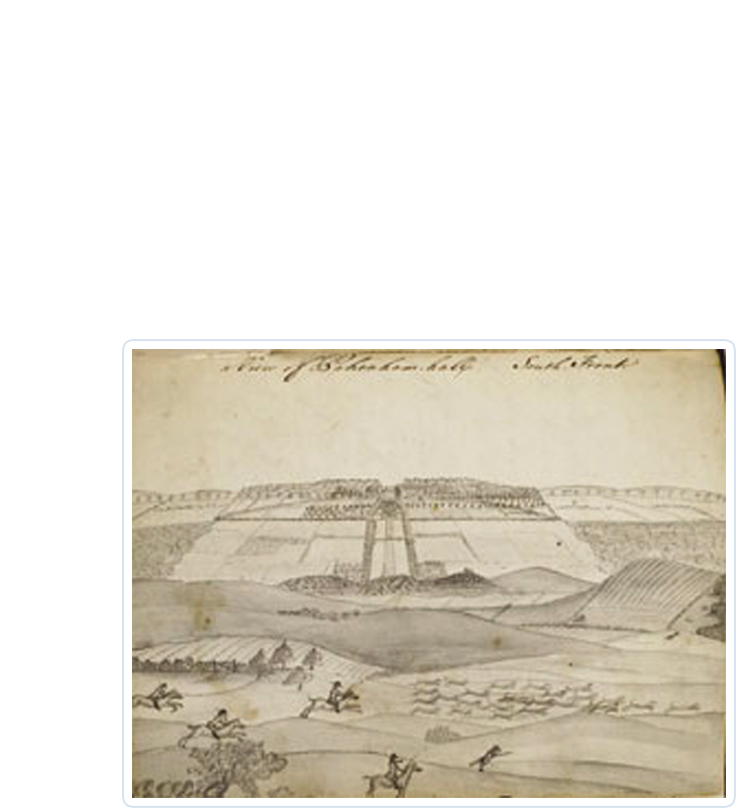
Acquiring the Estate
The name Tullynally is an adaption of Tulaigh an Eallaigh – the Hill of the Swan. The hill overlooks Lough Derravaragh, the legendary lake of the Children of Lir who were turned into swans and we like to think the name has some connection with the legend. In Norman times, the land was owned by the FitzSimons who later moved to Wicklow.
Henry Pakenham bought the estate in the wake of the Cromwellian civil wars – and built a square “plantation house” which is still the core of the existing castle. You can see a tiny picture of it illustrated in a family diary of 1736, which also shows large formal gardens on the southern slope below the house of canals and basins flanked by avenues of trees. In the foreground a fox hunt is going on and you can see the fox escaping to the right. See how this compares with the castle from the same hill today.
Thomas Pakenham & Elizabeth Cuffe
In 1740, Henry Pakenham’s grandson Thomas married a neighbouring heiress, Elizabeth Cuffe, great neice of the last Earl of Longford, and the family fortunes took an upward turn. The Longford title was recreated for Thomas Pakenham and the house was enlarged with another storey. The old formal gardens were swept away as part of the fashion for a romantic “natural” landscape and were replaced by a “wilderness” or a Pleasure Ground planted west of the house leading to a large walled Kitchen Garden and two ornamental lakes.
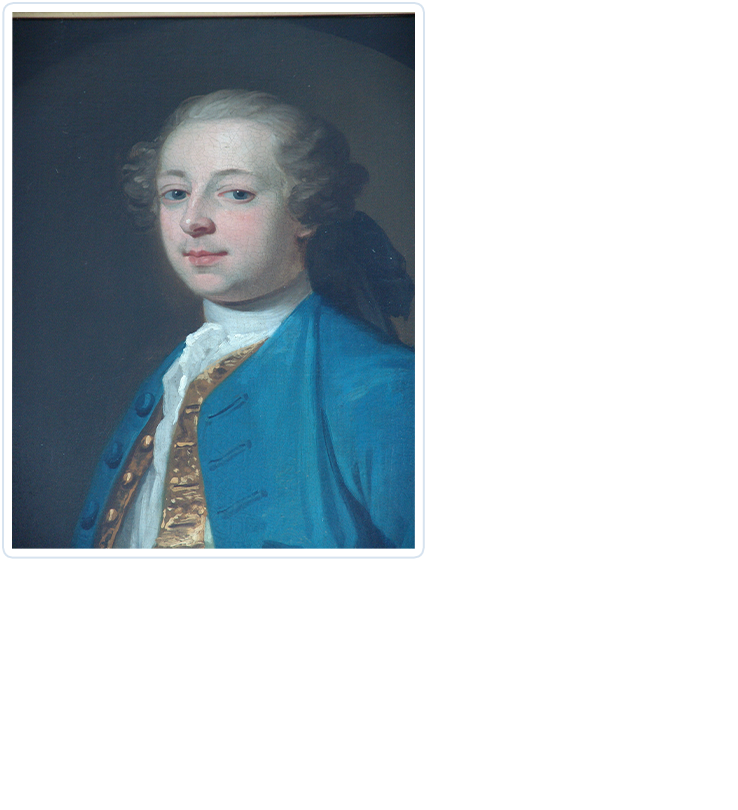
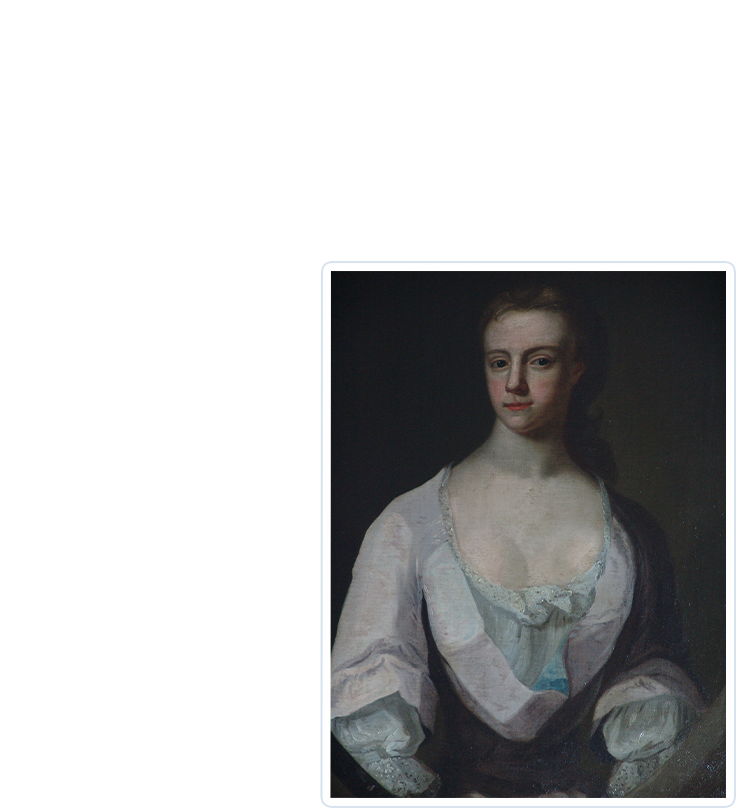
"Improvements"
In 1803, the 2nd Earl of Longford, another Thomas, decided to turn his house back into a castle, with flanking towers and a row of battlements. The architect was Francis Johnston who could be relied on to turn out whatever was wanted, gothic or classical. In this case, the gothic was a light fancy dress leaving Georgian proportions and windows as they were.
The 2nd Earl was a compulsive builder and in 1820 there was a second round of gothic “improvements” designed by James Sheil, including an octagonal diningroom and and a magnificent Great Hall with perfect acoustics for music. It is now used regularly for concerts.
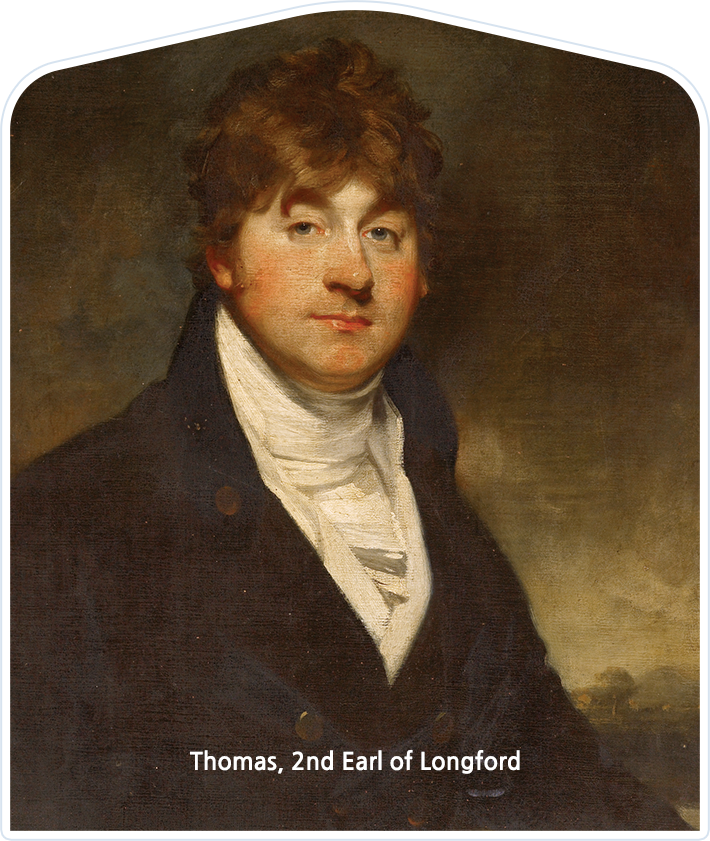
Maria Edgeworth Reports
The 2nd Earl was also the first to install a central heating system in a private house in Ireland. It was designed for him by his neighbour, Richard Lovell Edgeworth from Edgeworthstown, a gifted inventor.
Edgeworth’s daughter, Maria, reported excitedly in 1813 that: “The house is now so well warmed… that you never have any fear in going from one room to another… and the children play in the hall from morning to night.”
A later letter of Maria Edgeworth’s gives an account of the gardens in the 1830s made by the 2nd Earl’s English wife, Georgiana.
“Lady L may want feeling (Maria had found her rather hard and unfriendly) but taste she has – I never saw in England and Ireland such beautiful gardens and shrubbery walks as she has made – In a place where there was only a swamp and an osiery, she has made the most beautiful American garden my eyes ever beheld – took advantage of a group of superb old chestnut trees, oak and ash for a background – trees that had never been noticed before in that terra incognita and now it is a fairy land.”
– Maria Edgeworth
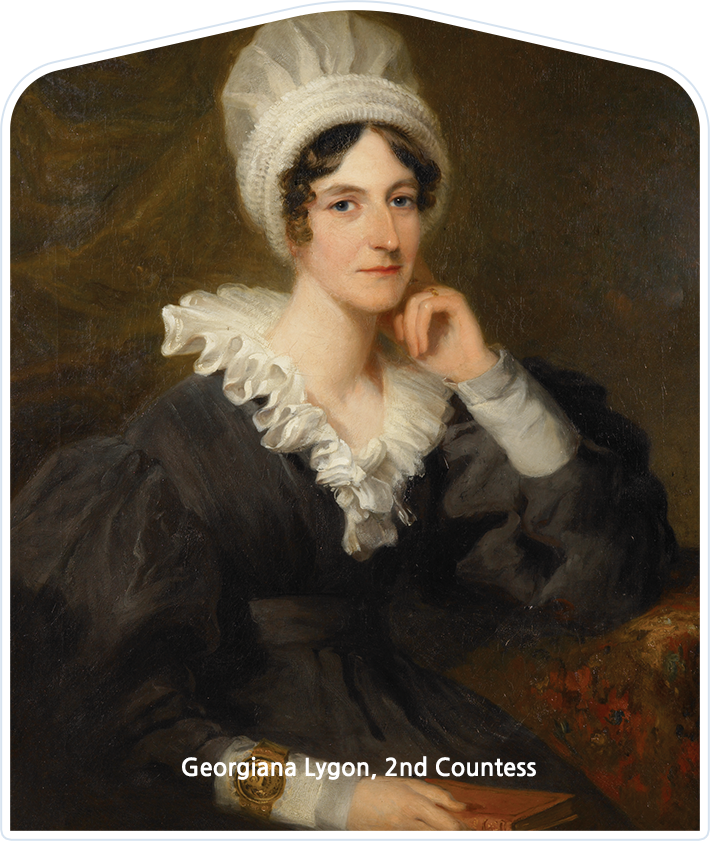
Expansion of the Castle
You can still see most of the trees that framed Georgiana’s “fairyland” in the Forest Walk. But when her husband died suddenly in 1835 leaving her a widow with ten young children, she returned to England and her gardens were largely given up. But her eldest son, Edward, the 3rd Earl, went ahead with his father’s latest building plans and doubled the size of the castle in 1840 with two large castellated wings connecting the main house to the old stable courtyard. These were to provide model servants’ quarters, including a vast Victorian kitchen and a state of the art three roomed laundry. Hampers of laundry would be dispatched back there by boat and train from the Longfords’ house in London until the 1st World War.
The Castle Today
Later generations have left the castle much as it was with minor alterations. Parts of the wings now provide comfortable flats for family and long term tenants and an old stable block in the outer courtyard has been converted into a delightful Tearoom opening onto a sunny loggia.
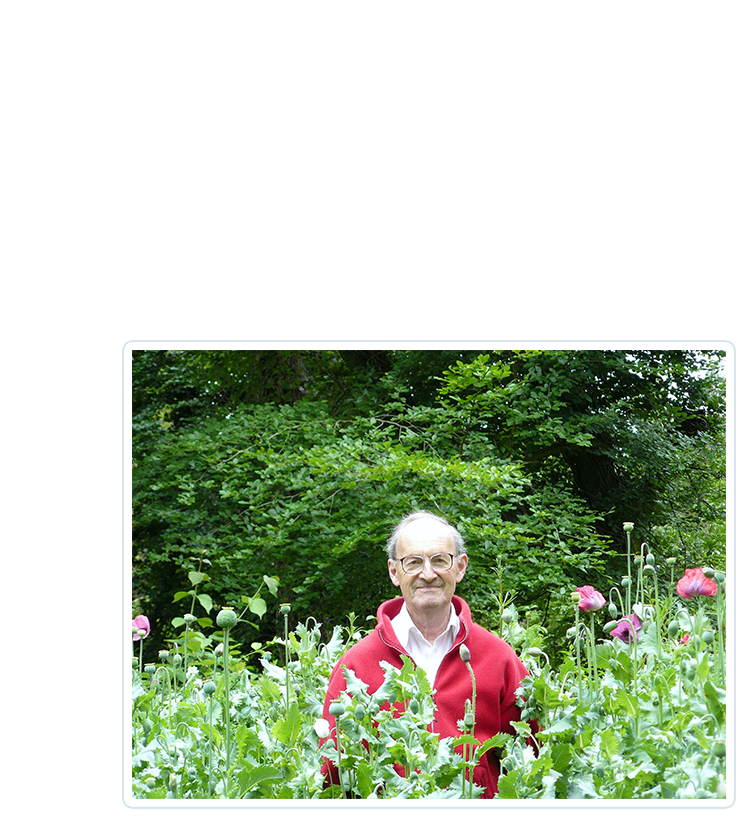
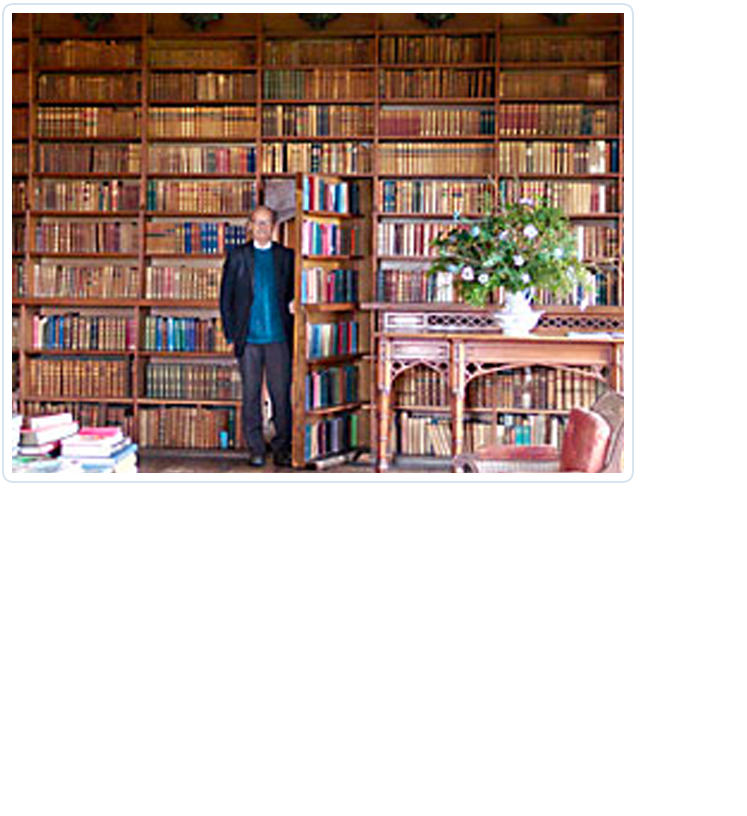
Present Owner
Thomas Pakenham
The present owner, Thomas Pakenham inherited the estate in 1961 at the death of his uncle, the 6th Earl of Longford (who many Dubliners still remember for his work at the Gate Theatre.) Thomas, after producing three large history books (The Year of Liberty, The Boer War and The Scramble for Africa – all still in print) turned to writing about trees – starting with Meetings with Remarkable Trees in 1993 – and has become a passionate gardener.
In recent years, he has brought back seeds from plant hunting trips to China, Tibet and Sikkim in Northern India. Most of his planting has been in the Forest Walk, where Georgina had her American garden and the soil is acid. His most recently planting has been a collection of rare magnolias at the far end of the Lower Lake.
The Pakenham
Family today
Thomas’s late wife Valerie, did most of her gardening in the walled gardens. She wrote 2 historical anthologies, one on Dublin and one on The Big House in Ireland, and an edited collection: “Maria Edgeworth: Letters from Ireland.” Her last book was “Exploring Ireland’s Middle Kingdom: A Guide to the Ancient Kingdom of Meath”.
Their daughter Eliza Pakenham has written a family history about the 2nd Earl and his brothers and sisters, one of whom, Kitty Pakenham married the great Duke of Wellington. The family’s books can usually be found for sale in the Tearoom.
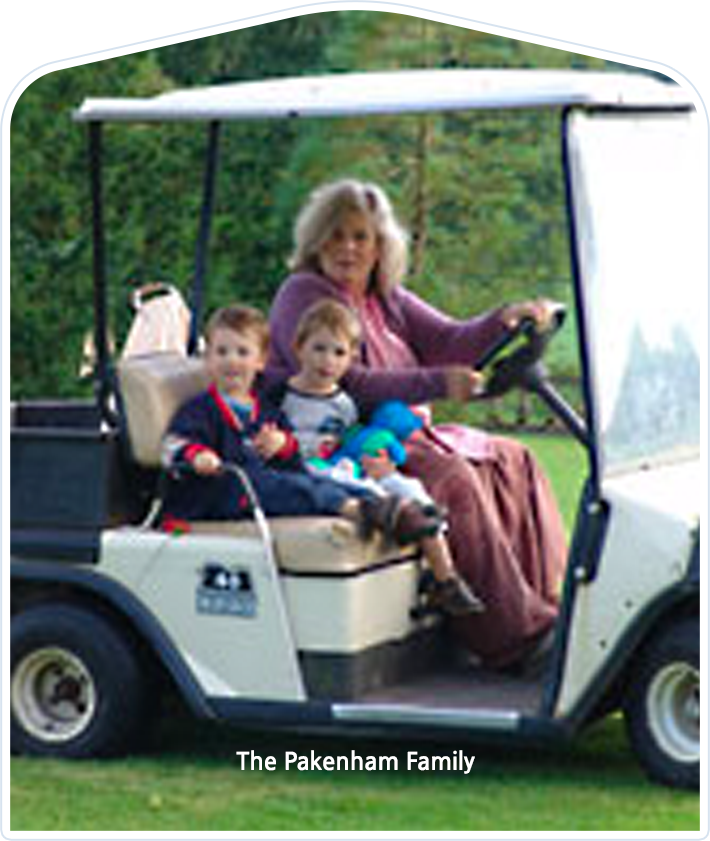
The Pakenham Family
SINCE 1900
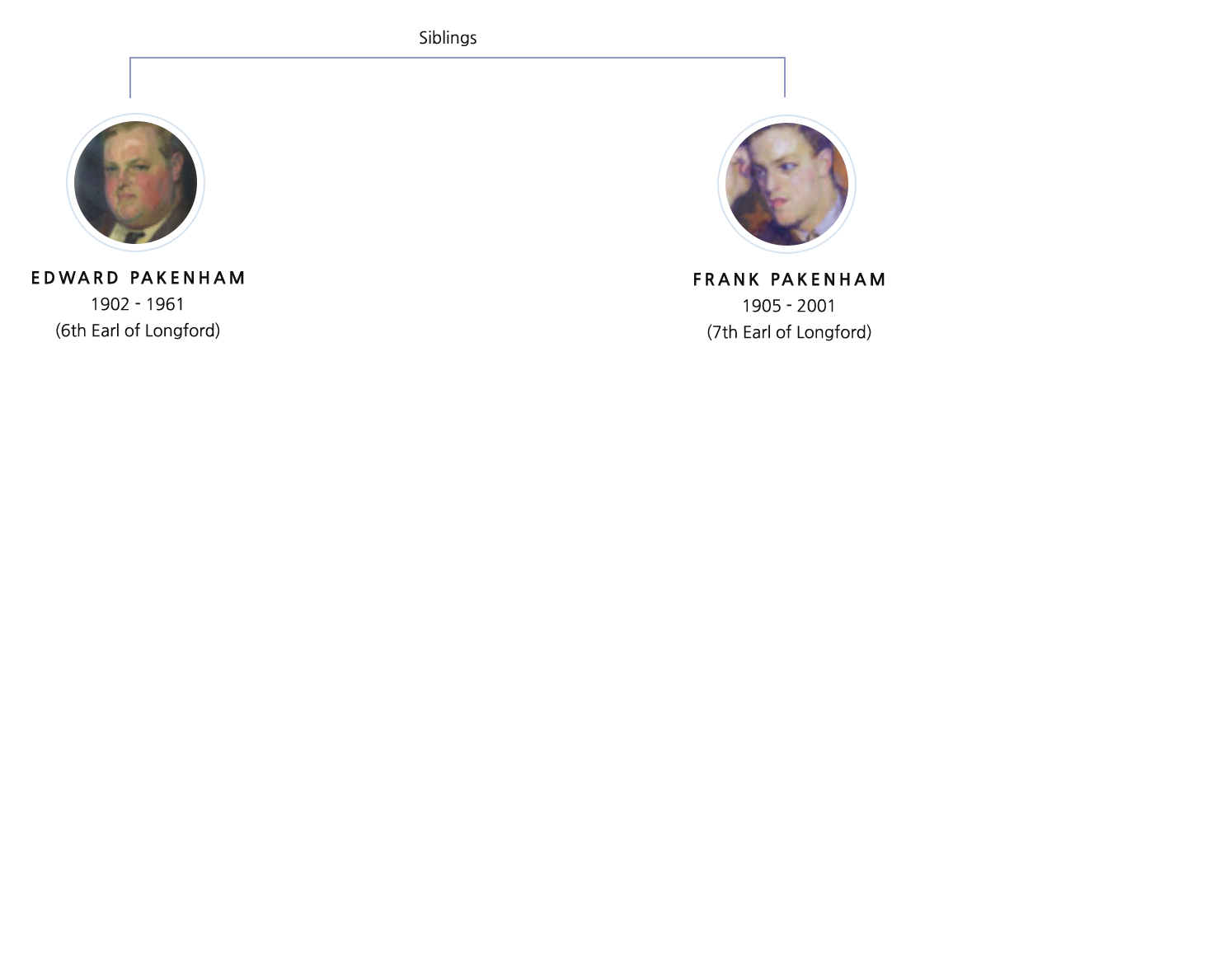
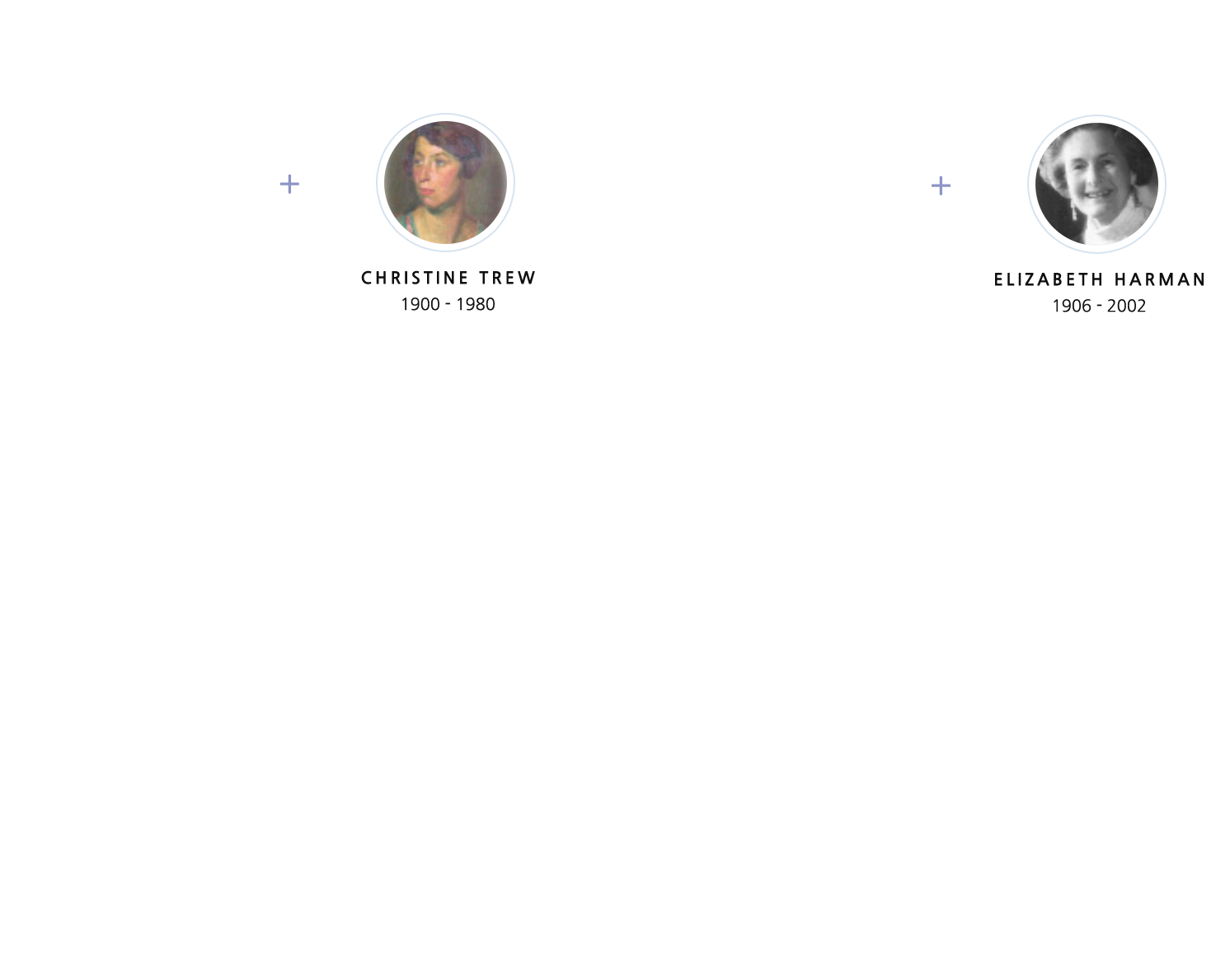
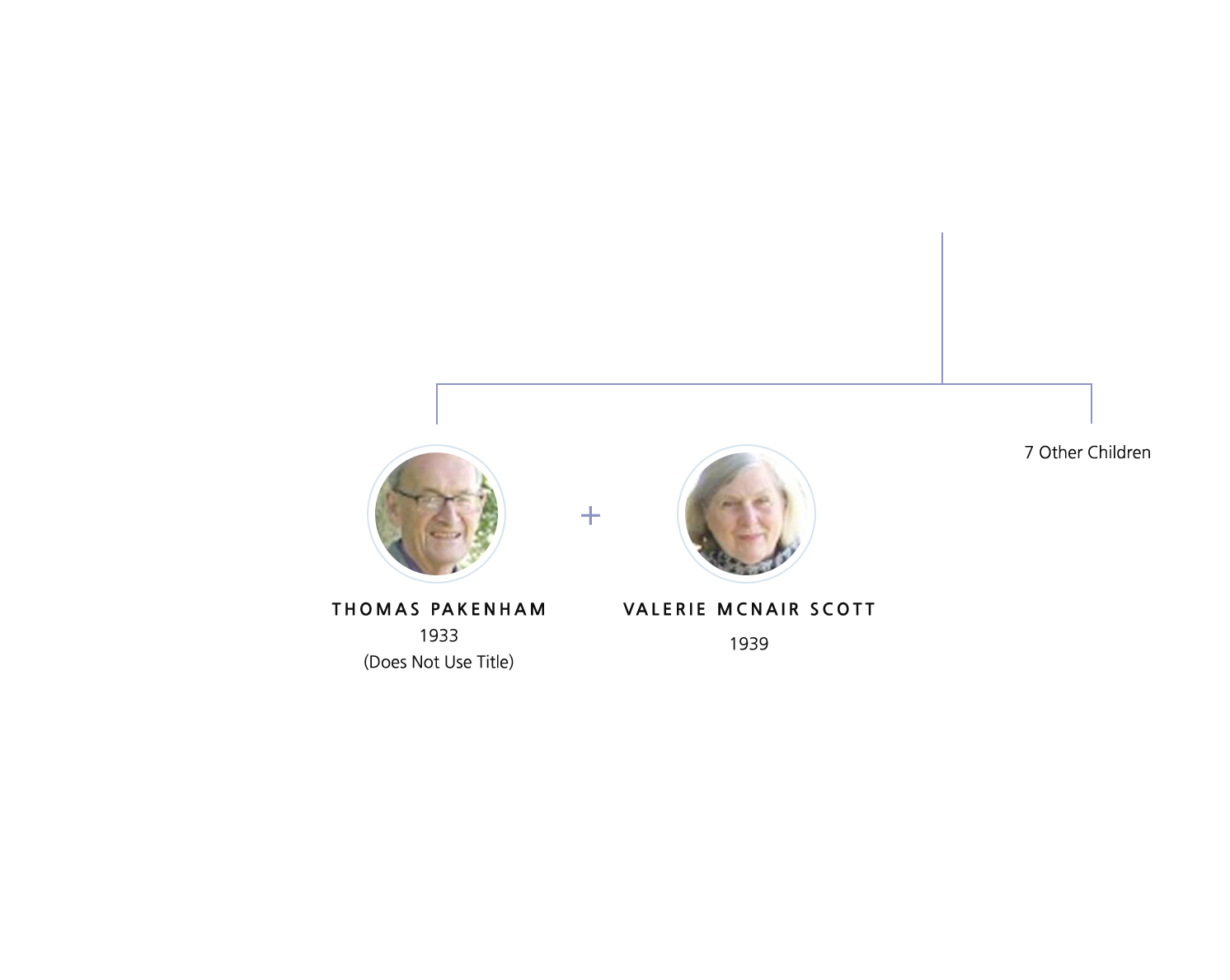
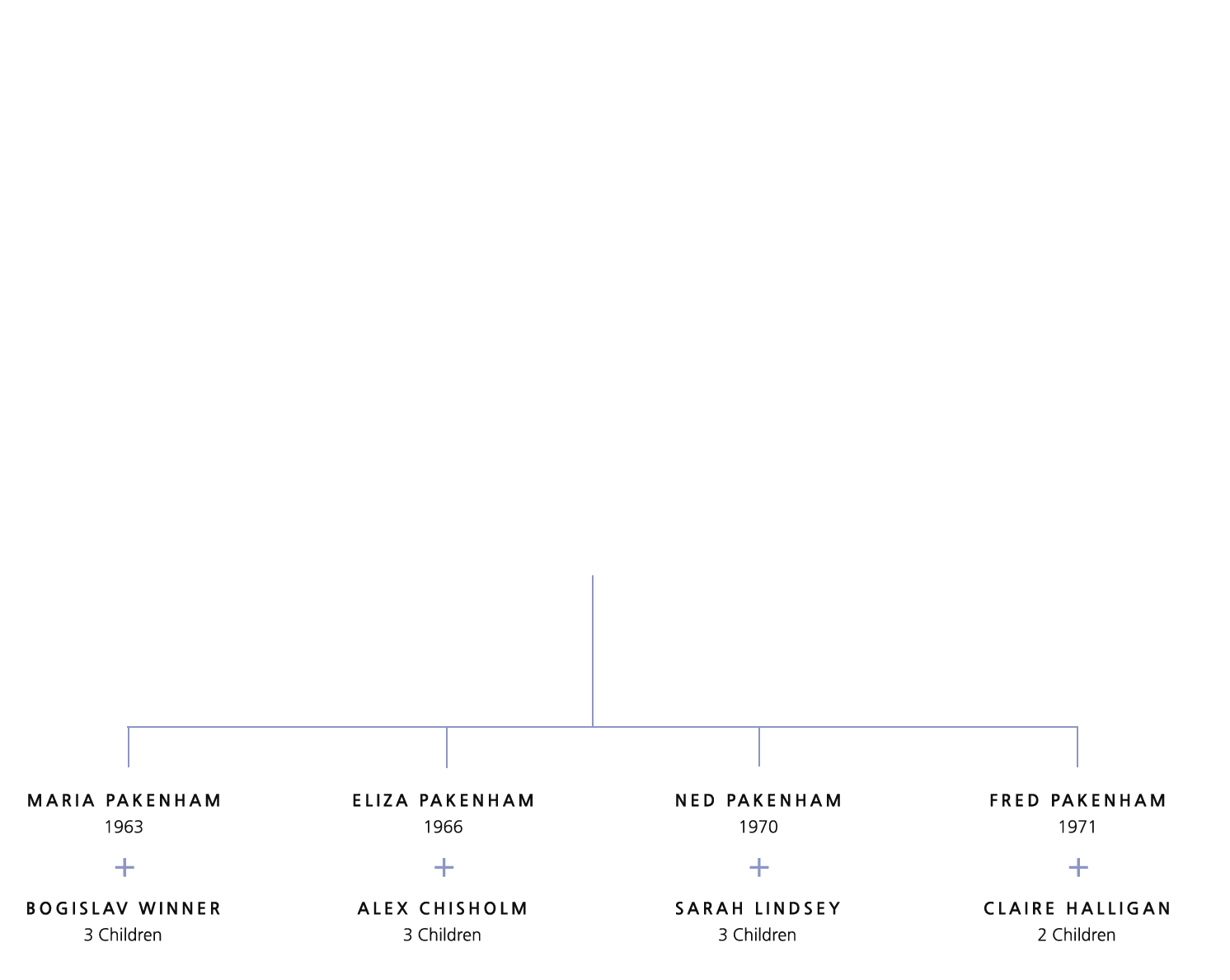
Closed Until 29 March 2025
Tullynally Castle, Gardens and Tearoom are now closed until 29 March 2025. Please sign up to our newsletter to keep updated.
Opening Hours
Thursday to Sunday:
9am to 5pm
Monday to Wednesday:
Closed
Stay up to date
For the latest news and events from Tullynally, please subscribe to our mailing list.

